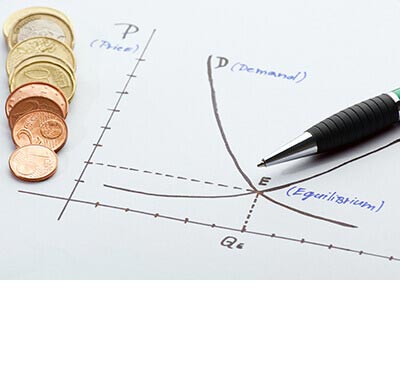- 1.1 Explain the importance of economics.
- 1.2 Compare and contrast microeconomics and macroeconomics.
- 1.3 Explain how economists use theories and models to understand economic issues.
- 1.4 Contrast traditional economies, command economies, and market economies


Built from OpenStax’s US Microeconomics
Introduction to Microeconomics
BNED Courseware for Introduction to Microeconomics covers the scope and sequence of most introductory microeconomics courses. The student is introduced to microeconomic concepts and analysis, supply and demand analysis, theories of the firm and individual behavior, competition and monopoly, and welfare economics. Through text, video and a host of practice activities and assignments, students use what they have learned to apply microeconomic theory to address problems in current economic policy.
Learning Objectives/
- 2.1 Explain the economic reasoning of how individuals make choice.
- 2.2 Explain how the production possibilities frontier model and the law of diminishing returns impacts societal choices.
- 2.3 Explain objections to the economic approaches of decision-making.
- 3.1 Define demand, supply, and equilibrium in markets for goods and services.
- 3.2 Identify factors that cause shifts in demand and supply for good and services.
- 3.3 Describe how changes in supply and demand change equilibrium price and quantity.
- 3.4 Explain price ceilings, and price floors.
- 3.5 Compare and contrast the economic efficiency of supply and demand with price floors and price ceilings.
- 4.1 Explain the factors that shift supply and demand in the labor market including technology and minimum wage.
- 4.2 Describe demand and supply of financial markets.
- 4.3 Apply economics models to analyze prices and quantities.
- 5.1 Calculate the price elasticity of demand and supply.
- 5.2 Identify types of elasticity.
- 5.3 Analyze how price elasticity will affect changes in quantity and total revenue when supply and demand change.
- 5.4 Explain how elasticity can be measured in areas other than price.
- 6.1 Describe how total utility, marginal utility, and diminishing marginal utility impact consumption choices.
- 6.2 Describe how changes in income and prices affect consumption choices.
- 6.3 Identify how workers make choices regarding work hours, leisure. and income.
- 6.4 Identify how people make choices about the quantity of financial savings.
- 7.1 Explain the relationship between cost and revenue.
- 7.2 Analyze short-run fixed and variable costs to calculate average profit.
- 7.3 Identify the structure of costs in the long run.
- 8.1 Explain the assumptions of perfect competition.
- 8.2 Describe how perfectly competitive firms make output decisions.
- 8.3 Analyze how businesses make entry and exit decisions in the long run.
- 8.4 Describe concepts of efficiency in perfectly competitive markets.
- 9.1 Explain how monopolies are formed.
- 9.2 Describe how a profit-maximizing monopoly chooses output and price.
- 10.1 Explain monopolistic competition and its impact on business.
- 10.2 Explain oligopoly and its impact on business.
- 11.1 Describe the impact of corporate mergers on competition.
- 11.2 Explain anti-competitive behavior and restrictive business practices.
- 11.3 Evaluate methods of regulating natural monopolies.
- 11.4 Analyze the effects of deregulation.
- 12.1 Describe the economics of pollution.
- 12.2 Explain command-and-control regulation and its effectiveness.
- 12.3 Identify market-oriented environmental tools.
- 12.4 Describe the benefits and costs of U.S. environmental protection.
- 12.5 Identify international environmental issues.
- 12.6 Evaluate the trade off between economic output and environmental protection.
- 13.1 Explain why the private sector under invests in innovation.
- 13.2 Compare and contrast ways governments encourage innovation.
- 13.3 Describe public goods and the free rider problem.
- 14.1 Explain economic inequality and the poverty line.
- 14.2 Describe the poverty trap and potential issues in government programs that seek to reduce poverty.
- 14.3 Describe safety net programs.
- 14.4 Analyze the causes of income inequality and explain the tools for measuring income distribution.
- 14.5 Compare and contrast the incentives used to reduce income inequality.
- 15.1 Describe labor unions.
- 15.2 Identify areas of potential employment discrimination and its economic impact.
- 15.3 Analyze economic effects of immigration.
- 16.1 Discuss the economic impact of imperfect information and asymmetric information.
- 16.2 Evaluate insurance types and government regulations for insurance.
- 17.1 Describe methods used by businesses to raise financial capital.
- 17.2 Describe how households supply financial capital for businesses.
- 17.3 Compare and contrast the techniques for saving and accumulating personal wealth.
- 18.1 Explain what influences people to vote and the cost of elections.
- 18.2 Identify how special interest groups impact politics.
- 18.3 Discuss flaws in the democratic system of government.
- 19.1 Explain absolute advantage, comparative advantage, opportunity costs, and gains of trade when a country specializes.
- 19.2 Evaluate the relationship between the costs of production and comparative advantage.
- 19.3 Explain the relationship between economies of scale and intra-industry trade.
- 19.4 Identify barriers to international trade and the benefits of reducing those barriers.
- 20.1 Use concepts of demand and supply to analyze protectionism.
- 20.2 Analyze how international trade impacts wages, labor standards, and working conditions.
- 20.3 Explain and analyze various arguments that are in support of restricting imports.
- 20.4 Evaluate how regional, national, and global trade agreements are enacted.
- 20.5 Describe the complexities of international trade.







There are no reviews yet.